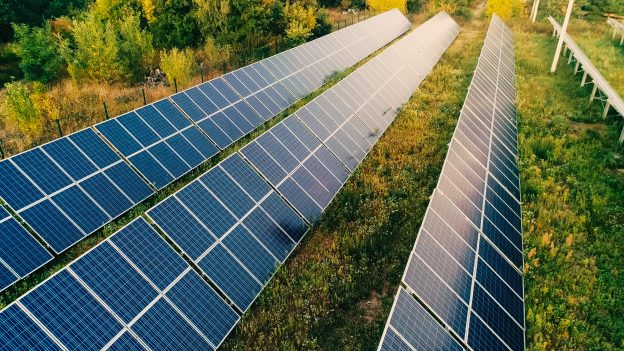Polysilicon:
Polysilicon prices have declined further throughout the week. The mainstream concluded price for mono recharge polysilicon is RMB 38/KG, while mono dense polysilicon is priced at RMB 36/KG and N-type polysilicon is currently priced at RMB 40/KG.
In trading activities, ingot manufacturers continue to purchase polysilicon as needed, opting for smaller, more frequent transactions to push prices down. However, polysilicon manufacturers, facing significant losses, are reluctant to concede further profits, resulting in stagnant trading activity. Consequently, both trading volume and price range have contracted this week. Additionally, polysilicon inventories have increased.
Regarding supply and demand, early Q2 has seen a complete disruption in the balance due to leading manufacturers bringing new capacity online. Currently, lower-priced orders mainly come from new entrants or manufacturers experiencing cash flow issues, with prices for P-type and N-type polysilicon falling below mainstream market rates.
Profitability is a significant concern. Calculations based on mainstream market prices indicate that most manufacturers cannot cover their operating costs as the P-type and N-type polysilicon prices are closed to the break-even point, with gross margins for polysilicon ranging from -20% to -30%. This suggests that the sector will see high-cost, inefficient capacity phased out. Manufacturers with sufficient cash flow can sustain operations, whereas tier-2 and lower-tier manufacturers will face production suspensions and capacity reductions due to high costs and low sale prices.
This week, concluded prices for mono dense polysilicon range from 36-40 yuan/KG, while N-type polysilicon ranges from 40-43 yuan/KG. Looking ahead, if the supply-demand imbalance persists and inventories remain high, polysilicon prices are expected to decline further. Given current prices, there is no cost-side support, and future price trends will depend on the extent to which manufacturers reduce their capacity.
Wafer:
The prices of wafer have still reduced throughout the week. The mainstream concluded price for M10 P-type wafer is RMB 1.40/Pc, while G12 P-type wafer is priced at RMB 1.95/Pc. The mainstream concluded price for M10 N-type wafer is RMB 1.25/Pc and G12 N-type is RMB 1.95/Pc. The mainstream concluded price for N-type G12R wafers is RMB 1.65/Pc.
Currently, ingot manufacturers are operating at high utilization rates. Despite some manufacturers' plans to reduce production, total wafer output will still exceed demand. Wafer inventory has already increased to between 4.4 billion and 4.6 billion pieces, up 12.5% from early this month, exacerbating supply-side pressure.
Given the backdrop of lower profits and the frequent adoption of dual distribution models, cell manufacturers are becoming increasingly reluctant to purchase wafers. Additionally, recent adjustments in U.S. tariff policies on solar cells from China have introduced further uncertainties regarding future wafer demand from cell manufacturers.
Profitability for both P-type and N-type wafers continues to decline. At current prices, profits per watt of wafers range from -0.01 yuan to -0.03 yuan. This puts ingot manufacturers in a difficult position: reducing utilization rates would lead to even greater losses. For instance, the mainstream price of N-type M10 wafers is now 1.25 yuan per piece, below the bottom line, driven down by surplus supply and irrational competition.
Looking ahead, if this month's planned production remains largely unchanged from earlier projections, wafer prices will continue to face intense competitive pressure until the cash flow of some manufacturers dries up.
Cell:
Cell prices have declined this week. The mainstream concluded price for M10 cell is RMB 0.330/W, while G12 cell is priced at RMB 0.340/W. The price of M10 mono TOPCon cell is RMB 0.34/W, while that of G12 mono TOPCon cell is RMB 0.38/W.
N-type cell production continues to increase, with cells from OEMs and direct sales mixed in the market. High wafer inventories and prices below reasonable levels have increased pressure on cell suppliers. Although there isn't a surplus of cell supply yet, downstream module manufacturers are pushing cell prices down due to the significant drop in wafer prices. Consequently, cell inventories are still rising.
Currently, chaotic wafer pricing has led to a wider gap in the costs of cells produced through different channels. This has resulted in market price instability for cells, prompting some manufacturers to reduce planned production to avoid losses. This has led to more frequent production suspensions and maintenance.
Looking ahead, as prices in the upstream sector continue to decline significantly, cell manufacturers' bargaining power weakens, making it more challenging to maintain stable cell prices. Therefore, it is likely that cell prices will continue to decline.
Module:
Module prices have all declined throughout the week. The mainstream concluded price for 182mm facial mono PERC module is RMB 0.80/W, 210mm facial mono PERC module is priced at RMB 0.82/W, 182mm bifacial glass PERC module at RMB 0.82/W, and 210mm bifacial glass PERC module at RMB 0.84/W. The mainstream concluded price for 182mm bifacial TOPCon modules is RMB 0.86/W, and 210mm bifacial HJT modules at RMB 1.00/W.
Supply and demand in the module sector remain stable. However, irrational competition and rapidly declining prices negatively impact module costs. Consequently, module manufacturers are adjusting their prices as costs fluctuate, leading to customer concerns about price stability.
Currently, project profits at the customer end are positive, but ongoing price declines in the upstream sector are causing customers to worry about potential value reduction of their modules. Recent changes in tariff policies in regions with high module premiums have introduced uncertainty, though the full impact of these changes remains to be seen. In response, module manufacturers are accelerating the construction of cell and module capacity in the United States to maintain market share. Looking ahead, module prices are expected to remain stable, but the future trend is uncertain until the upstream raw materials sector completes its phase-out process.







